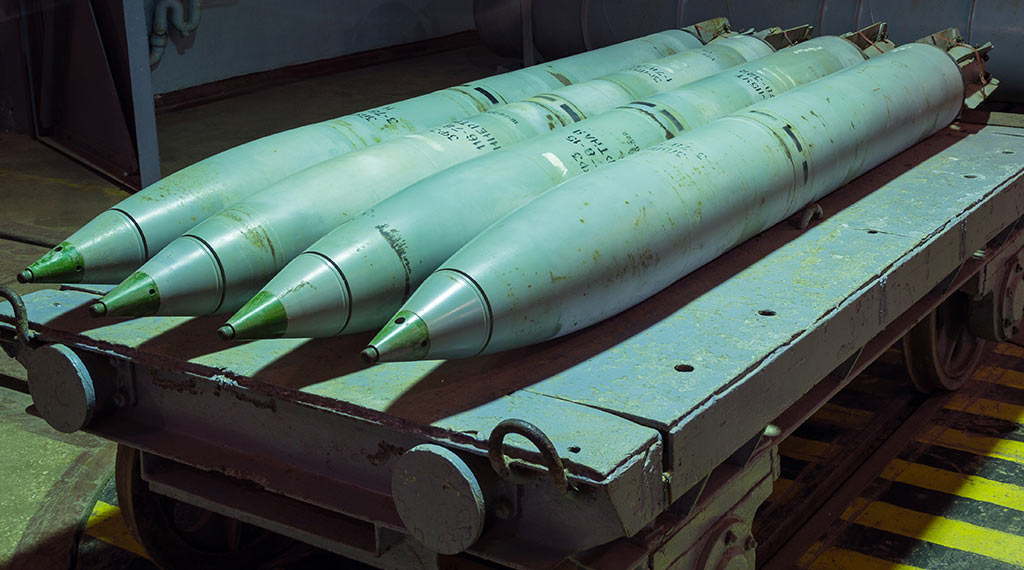
Although the current conflict in Ukraine is primarily centered on the dominance of drone warfare, Russia’s potential procurement of missiles from Iran suggests a new phase in its campaign. According to Maj. Gen. Kyrylo Budanov, head of Ukraine’s defense intelligence directorate, Moscow could receive deliveries of Iranian-produced ballistic missiles by the end of the month. This news comes just one week after the Kremlin carried out a roughly 55-missile barrage targeting Ukraine’s critical infrastructure on October 31. Additionally, in mid-October, Russian Forces launched a deadly series of missile strikes targeting civilian areas in the heart of Kyiv. While the cheap, lethal drones Moscow continues to procure from Tehran continue to be a headache for Ukraine’s defenses, an influx of missiles would pose a significantly greater threat.
Russia needs a restock of long-range and short-range missiles
Throughout October, Moscow prioritized targeting Ukraine’s power structures through missile attacks in an attempt to wipe out the country’s electrical infrastructure network before the winter hits. Russia’s missile barrages were successful in taking out almost a third of Ukraine’s power stations, including in the capital of Kyiv and the southern city of Mykolaiv. Military experts have indicated that Moscow’s sudden surge in missile use will undoubtedly result in a smaller stockpile – unless replenished domestically or through foreign imports.
According to the Pentagon, Moscow fired roughly 600 missiles in the first 11 days of the war alone. This number dropped off as the conflict progressed, and experts have questioned why Moscow has turned to the use of surface-to-air and surface-to-ship missiles to strike land-based targets. The fact that Russian forces would repurpose these munitions for unintended uses strongly indicates a diminishing stockpile. The Euromaidan Press published images on Twitter of Russian S-300 missiles striking an office building in Kharkiv last month. A swarth of these missiles, designed to attack targets in the air, hit residences and land-based infrastructure amidst the missile barrage.
Iran could solve Moscow’s missile shortage
The United Kingdom’s Defense Ministry questioned the long-term ability Moscow has to launch consistent missile barrages, calling it unsustainable. According to Politico, the ministry said Moscow “is probably incapable of producing advanced munitions at the rate they are being expended.” However, if an influx of Iranian-made surface-to-land short-range and long-range missiles were on the table, Moscow would not have to worry about running through its already low stockpiles.
The New York Times recently reported that a spokesperson for the Ukrainian Air Force is concerned that the Kremlin could be gearing up to procure Iran’s Fateh-110 and Zolfaghar ballistic missiles. Both the Fateh and Zolfaghar are short-range missiles that have the ability to strike targets at distances of 185 miles and 435 miles respectively. While the Fateh missile is produced in Iran, the U.S. Department of Treasury has accused a Chinese company of contributing heavily to the development of the munitions. Iran’s regional proxy groups, including Lebanon’s Hezbollah and Iraq’s Popular Mobilization Forces, have transferred the Fateh missile in the past. In theory, Iran would deliver this missile to Russia for the right price or benefit. As a subset of the Fateh family of missiles, the Zolfaghar short-range solid fuel ballistic missile would also serve the Russian Forces well. As the Center for Strategic and International Studies denotes, this missile has been active in the ongoing conflict in Syria and in northern Iraq.
Although both the Fateh and Zolfaghar short-range missiles have longer trajectories than the U.S.-provided M142-HIMARS (High Mobility Artillery Rocket System), range is perhaps the only advantage these weapons have. As detailed in a Newsweek piece, HIMARS outperforms Iranian missiles in accuracy. This capability has allowed Ukrainian forces to take out critical Russian targets in the ongoing invasion so far. Despite the comparable inaccuracy of the Iranian short-range missiles, the arrival of these weapons to the Russian front will allow its forces to bombard Ukraine with swarm barrages- ultimately weakening Kyiv’s defense abilities.
- Iran’s Growing Missile Arsenal Is a Challenge for Israel - November 18, 2025
- IAI Is Hoping to Secure a Contract for the “Golden Dome” - November 3, 2025
- Trump dispatches B-1 bombers and other military assets to Venezuela - October 28, 2025
